Lulu Guinness’s life in stitches
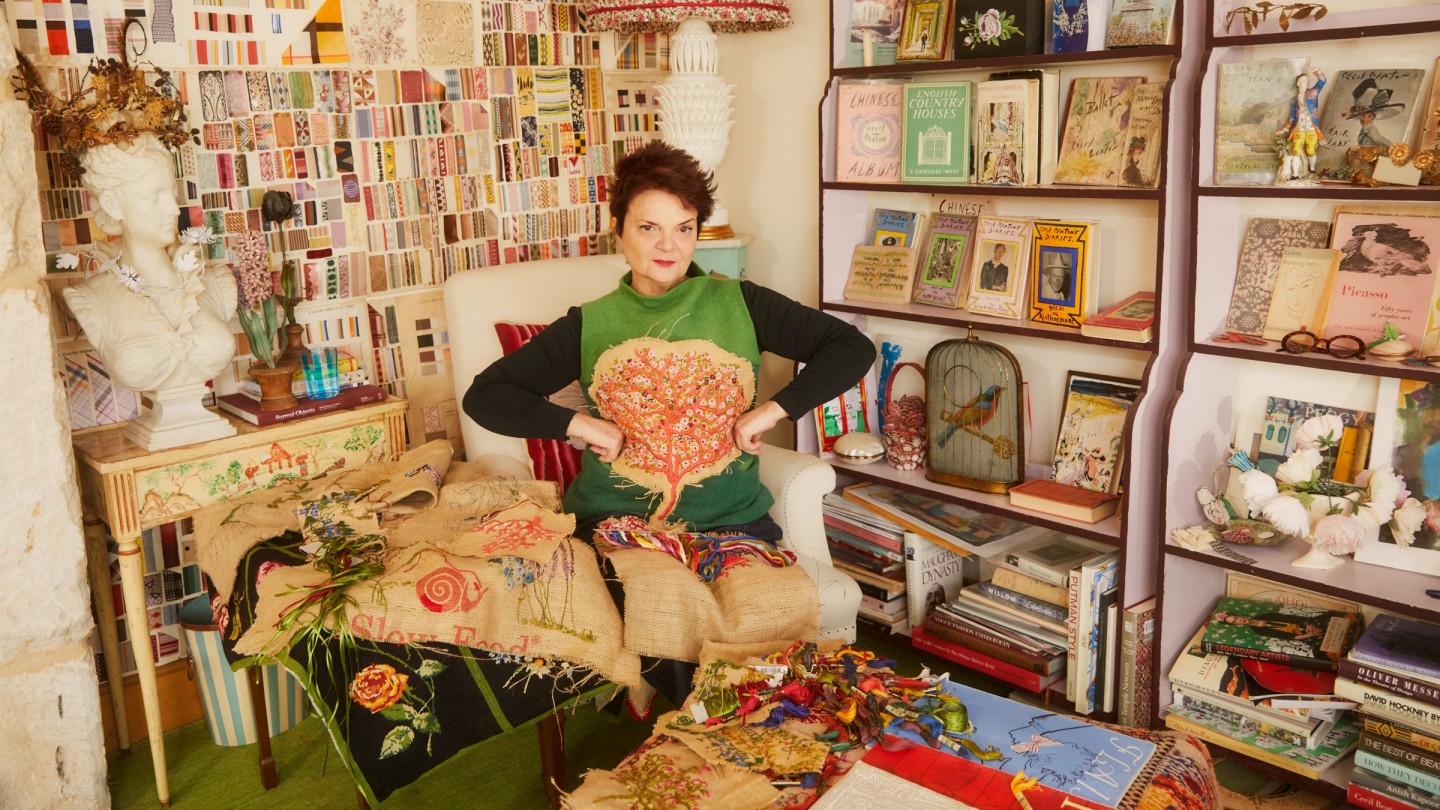
Roula Khalaf, Editor of the FT, selects her favourite stories in this weekly newsletter.
Embroidery is a lifelong obsession of mine. I wasn’t brought up with sewing – my mother couldn’t sew – but I’ve always been drawn to it. I’m like a magpie when it comes to decorative textiles.
I spent much of my life thinking I couldn’t sew. As a teenager at secondary school, I spent a whole term trying to add a zip to the denim skirt I was making. I was hopeless at sewing machines; I couldn’t manage them. It’s only now, in my 60s, that I’ve found the confidence – and I have the zeal of the converted.
As a child, I’d spend weekends with my grandparents in Suffolk. My maternal grandmother, Betty, was quite a sophisticated, chic lady with beautiful evening clothes and lovely little couture Hartnell bags. She instilled a love of vintage clothing and textiles in me. And I’ve always preferred decorating with textiles, rather than paintings or art. One of my early memories is when my paternal grandmother, Nesta Rivett-Carnac, died in the 1970s. I was allowed to choose something from her collection before a house sale. She had lived for a time in Shanghai, so I picked a panelled cream Chinese jacket embroidered with faded blue-and-pink floral patterns, which I’ve since framed and hung on the wall.
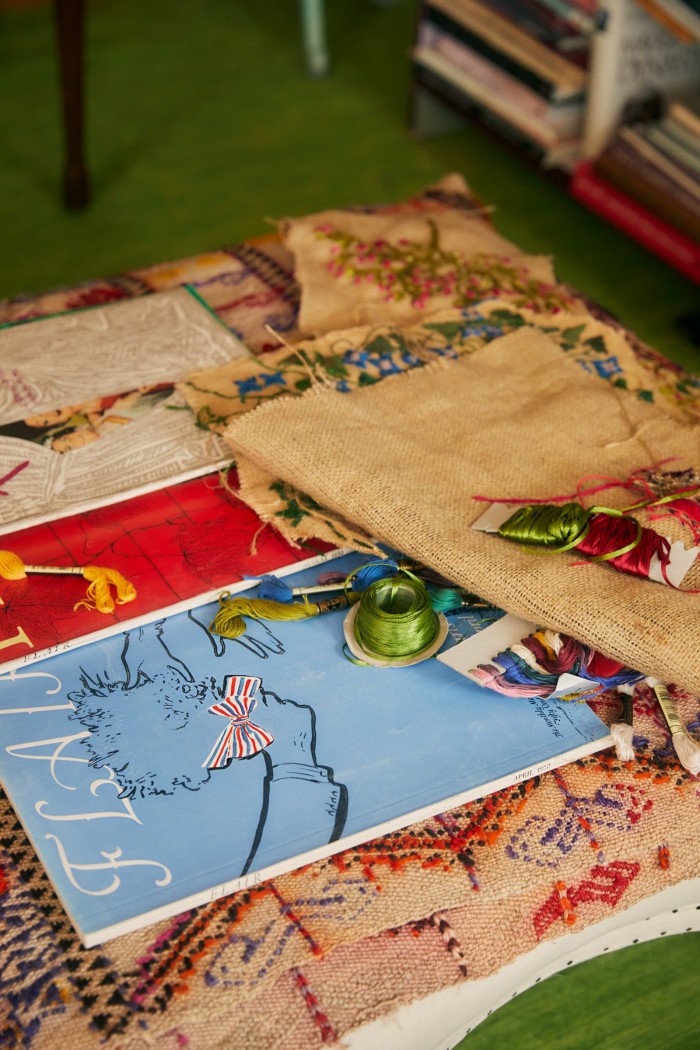
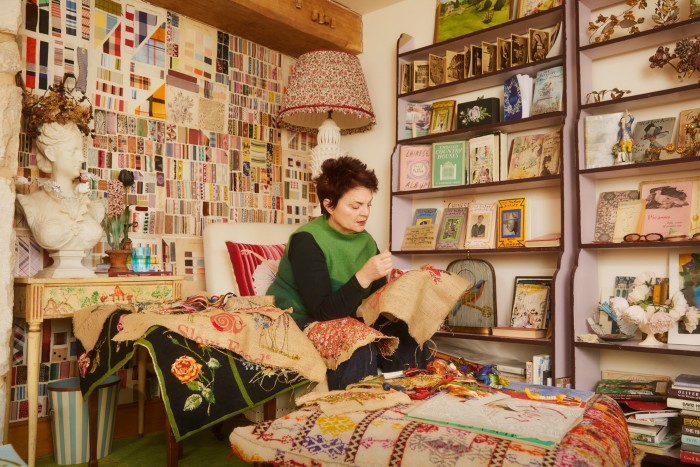
I’ve collected embroidery at markets and vintage shops for as long as I can remember. The Portobello Road antiques dealers would always think I was looking for bags, but it was actually the embellishment and bits of embroidery I was after. I love history and old things – it doesn’t have to be in good taste. I don’t take it all too seriously. An old silk nightie or an embroidered skirt would be the starting point for a design or an idea. They’d always be used to make something radically different. In a way, the bags were really just a canvas for embroidery.
In the late 1980s when I was renovating my first home – a former bedsit in west London – the first thing I bought was an enormous pale-blue 18th-century Italian embroidered textile from Alfies Antique Market. Decked with trees and birds, it filled a whole wall in the sitting room for decades and became the inspiration for a homeware collection.
Even now, the house I’m renting – a Gothic-style folly in Stroud’s Golden Valley that the editor Hamish Bowles calls “the hat box” – is a museum of embroidery. The walls are covered with textiles, from bright rose-embellished folk Transylvanian curtains to Chinese dressing gowns; chairs and stools and lamps are draped with fabrics; embroidered bags are strung from the lights. I’m living here while I’m renovating a farmhouse across the valley – the oldest parts of which date from the 1690s. Through this process my tastes have shifted: I’ve become fascinated with more naive Jacobean embroideries including crewel and stump work. They have such a rich, three-dimensional feel that’s really influenced my collecting – and my creations.
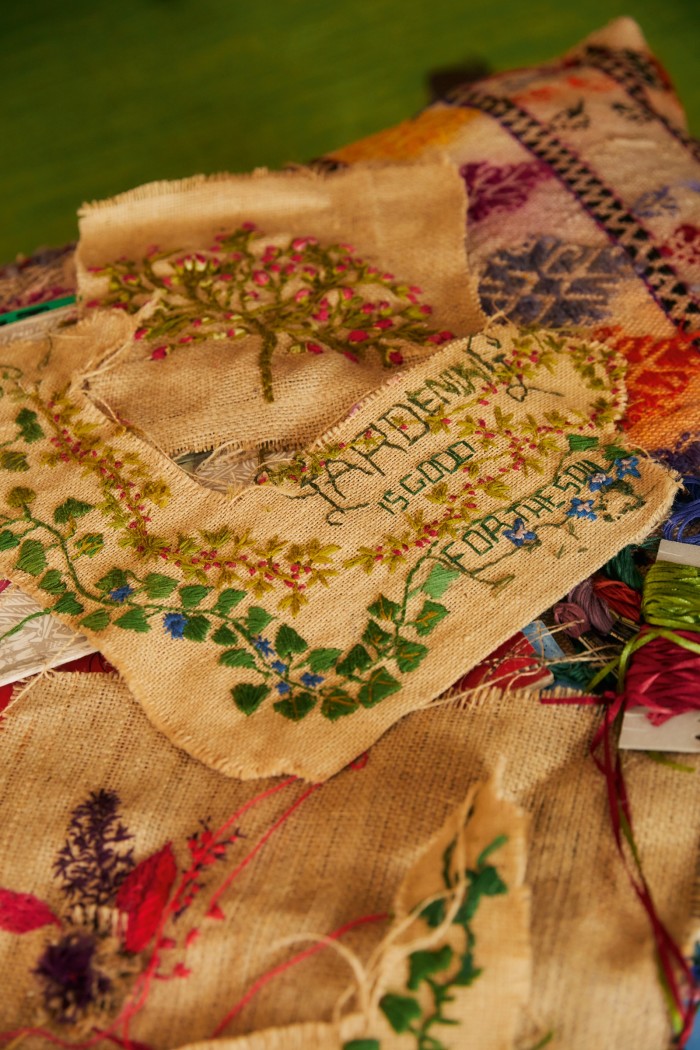
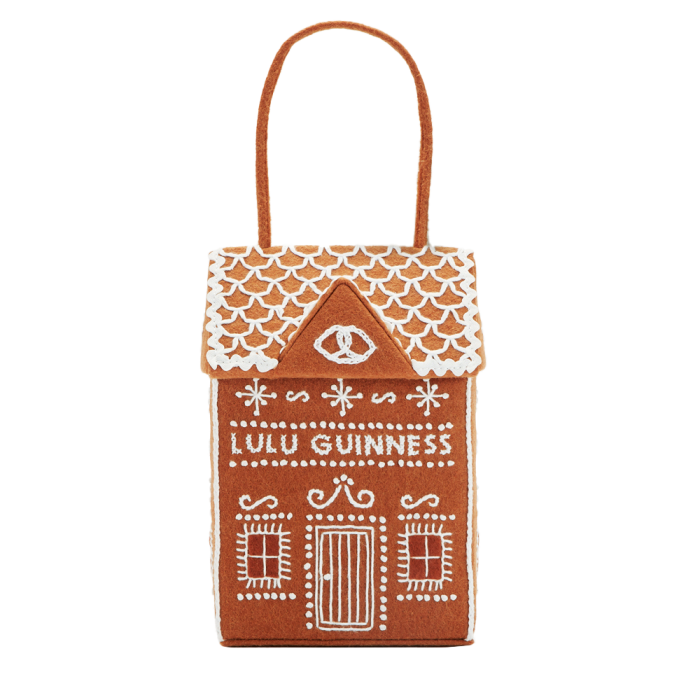
Lulu Guinness embroidered Gingerbread House clutch bag, £345
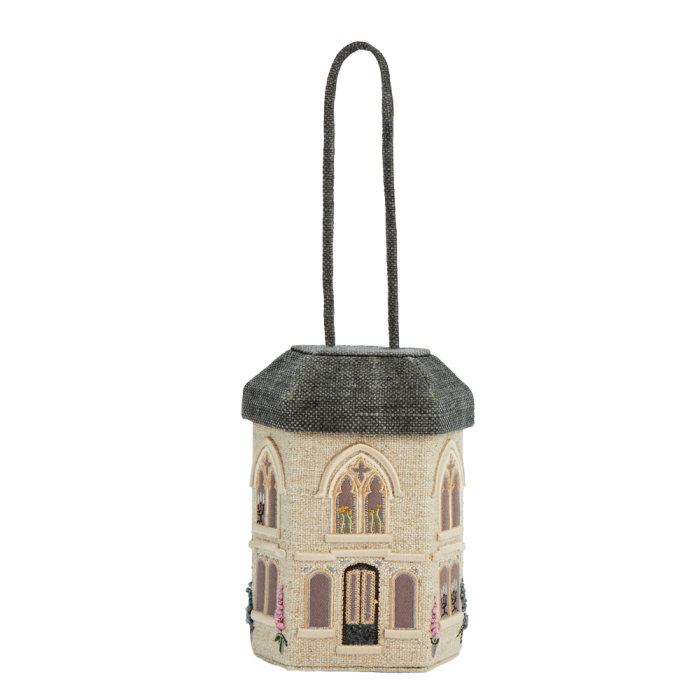
Lulu Guinness jute and cotton embroidered Stone Folly clutch bag, £450
It’s only recently that I’ve realised how much embroidery has always featured in my creations. In the early years of Lulu Guinness, there wasn’t a single leather bag – it was all embroidery and appliqué. When I first moved to Stroud, I was inspired to create the Folly bag, which replicates my rental home’s hexagonal architecture in miniature form using embroidered linen – from the Cotswolds slate and limestone façade down to the flower-adorned swing seat and candelabras at the windows.
Even though I’ve made my name through these intricately sewn bags, I’ve always considered myself a designer and a collector rather than a maker. That changed during lockdown when by chance I attended a week-long stitching course at Wonderful Workshops in Jaipur, India. I was so hopeless at first and felt very clumsy, but the teacher was fantastic. When I began working with a bigger darning needle, she said, “Just go for it, Lulu. Do your own thing.” I ended up embroidering a coral quilted coat with great big golden flowers in ribbon and beads. Everyone loved it. It was a revelation. It gave me the confidence to actually start sewing. I thought, “I can embroider.” I suddenly realised it didn’t have to be neat. I could just do things my way. I’m not a purist. My style is to make things look three-dimensional – nothing too perfect or symmetrical. I don’t get on well with embroidery frames. I like to attack things and make it up as I go along.
For me, sewing has become a kind of therapy. I suffer a lot with mental-health issues, and I’ve recently had a tragedy in my life. I’ve found the repetition of sewing a very good way to switch off my brain. It comes from the part of me that’s purely creative.
During winter, in the afternoons, I’ll listen to talking books and sew. I gobble up three or four books a week; I like fiction and biographies. At the moment it’s W Somerset Maugham. I sit on my bed in the folly, which has a beautiful view across the valley of trees and sheep and an arboretum, and sew for a few hours, or until I start rubbing my eyes and have to take a break.
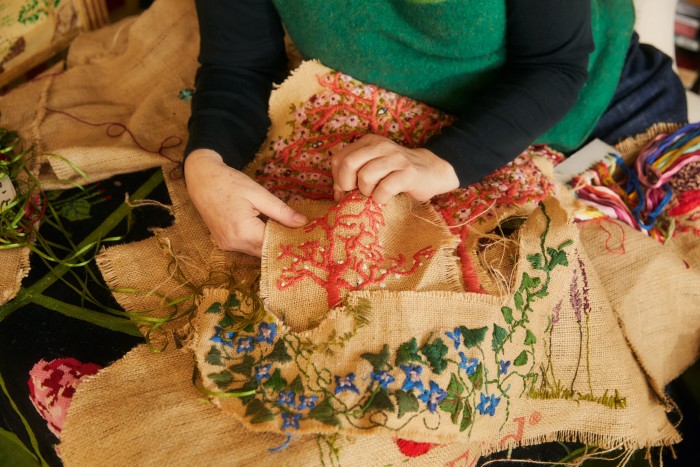
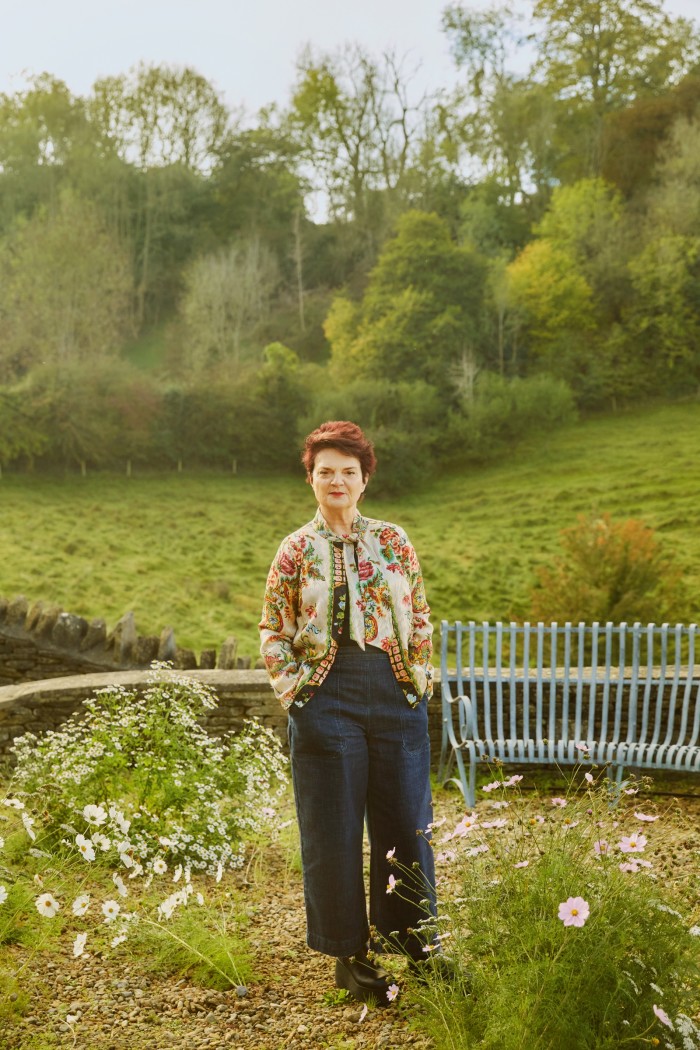
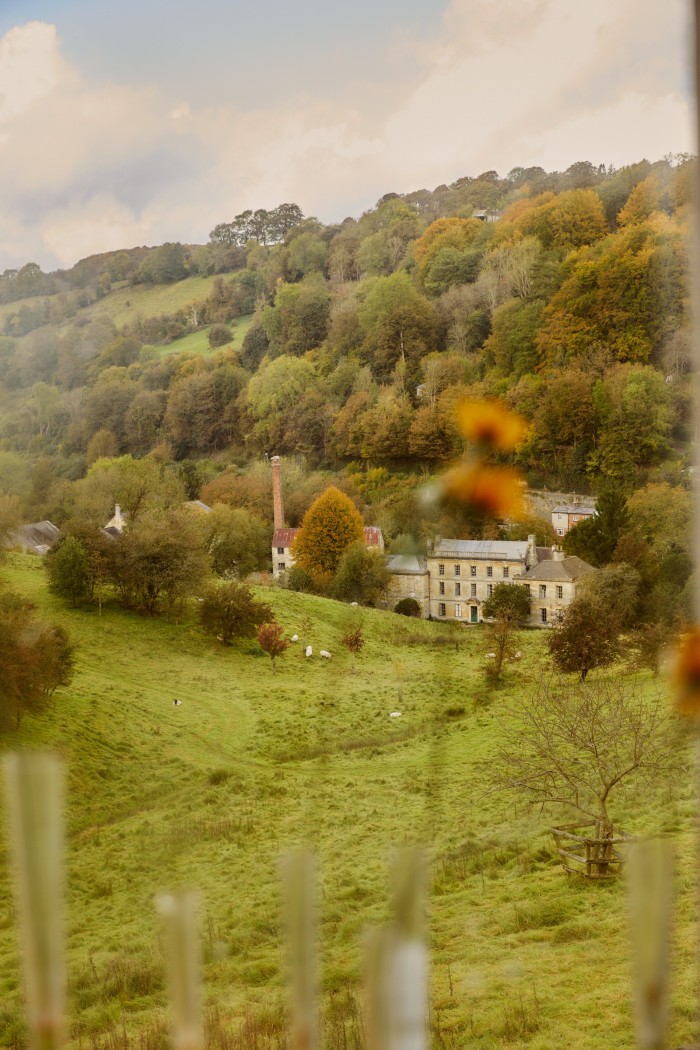
At first I was simply embroidering over old bits of chintz or whatever fabric I had to hand, but then I began stitching coral trees and blossoms on raffia – influenced by an embroidered coat made from hessian I have from Studio Hero. At the moment I’m creating 3D flowers made from layered circles of sacking stitched with colourful thread. The next step is to make a whole wall-hanging of my own.
When I’m in the middle of a piece, it becomes like an addiction; I can’t wait to get back to it. Whenever I travel I carry my sewing materials with me in a special case. At home I’m less organised – I’m constantly finding needles hidden down the side of the bed.
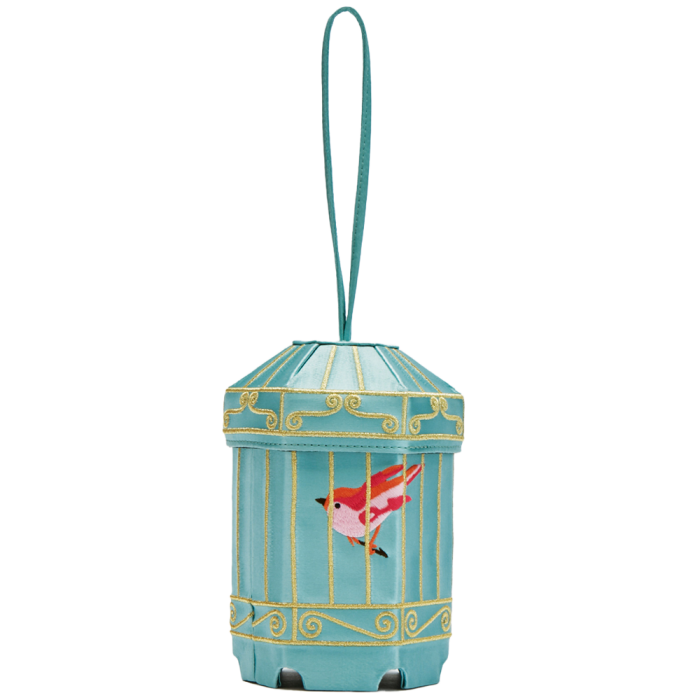
Lulu Guinness embroidered birdcage clutch bag, £345

My summer ’23 collection had a horticultural theme. It included a popular handbag designed in the shape of a green garden shed. On the inside, the roof is sewn with the words “Gardening is good for the soul to be free”. The phrase, which just popped into my head one day, started out as a small part of a huge embroidery I’d spent months working on. It’s the first time I’ve developed a bag design from my own embroidery rather than a sketch. The words also embellish a hessian zipped pouch sewn around an espalier pear tree. We launched the collection with lunch at the Garden Museum in London – and a stand at the Chelsea Flower Show – with hessian table placemats inscribed with the same design. That collection has really altered perceptions of the brand. I’ve since been invited to create a huge surrealistic embroidery piece for an exhibition next year at Blenheim Palace.
My ultimate goal is to design interiors using embroidery textiles. I certainly plan to cover my new house in my collection of textiles and my sewing creations. I hope to fill the bedroom walls with textile panels, so I’ll be completely immersed in embroidery. I feel like one of those people who has taken up running later in life. Learning to sew has given me a new beginning.
Comments